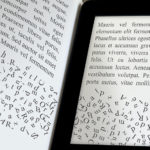I recently joined an American Association of School Librarians (AASL) working group that will develop guidelines to help librarians make decisions about digital content acquisitions.
Members were asked to introduce themselves, and to share their experience with eContent. What follows is an excerpt of what I wrote. I share it here, because it includes a few concerns I’ve been meaning to write about in this blog, so here goes:
“Our [New Canaan High School Library] collection includes about 1,400 ebooks, most of which are digital versions of our most popular print volumes. This was intentional, and it is working well. We have purchased eContent from
- Mackin
- Gale
- ABC-CLIO (annual subscription to leased content)
- Marshall Cavendish (now owned by Amazon)
- Sharpe
- Salem Press
- Follett
- Barnes and Noble
- BrainHive
Our students access all our eContent through Destiny. We set it up using the Digital Content Provider feature so our digital collection appears under the Digital Resources tab in the OPAC. Our students also use the DestinyQuest app to access our eContent on their devices, but they do not download content – they only access it through the browser. They can download Follett and Mackin content through their respective platforms, but we just haven’t launched that instructional piece yet because the technology is
-
- still clunky
- changing too rapidly
We are waiting for more stability among the K-12 eReader applications.
We bought one (1) eBook from Barnes and Noble in an emergency. We needed an extra copy, and it wasn’t available in print, so we downloaded it to one of our iPod Touches. Students who need the book can borrow the device for two weeks – an expensive book!
We circulate 13 iPod Touches (overnight checkout), and 27 iPads (in-library use only). None were purchased with district budget dollars – only award and prize monies. We charge all devices in a Bretford charging station designed for 25 iPads, but we just alternate different devices in the slots. After nearly 2 years of trying to keep them configured and properly updated ourselves (actually, a student did it), the district does it now.
I have surveyed and assessed our students extensively in the past two years. Their knowledge about, and use of eContent is deficient. New Canaan is an affluent New York City suburb. Nearly eighty percent of our students bring either a smart phone or an iPod to school (at least – many bring 2 or more devices), and we encourage them to use them for productivity and learning. We teach students how to download, and configure apps in class, providing iPods to students who don’t have app-enabled devices.
Last year, about 9% of our students had the Destiny Quest app downloaded to their device. This year, we increased that number to 37%. This is still a far cry from 100%, which is what it must be before we start eliminating redundant print titles.
Warning: I have opinions. Strong opinions. What follows might not sit well with some folks.
I have concerns about the way eCollections are developing – particularly the following emerging trends in K-12 library programs.
Note: What follows does not, in any way, describe my experience at New Canaan Public Schools. My district’s leadership is innovative and visionary in this realm. The following statements are based on conversations I’ve had in edWeb.net/emergingtech, and on the conference circuit with fellow school librarians in other districts.
- Administrators/Board of Education members confuse owning eContent with technology integration.
- Administrators/Board of Education members “gift” libraries with iPads/Kindles/Nooks, but fail to provide additional funding for eContent/apps, or tech support to manage them.
- Libraries replace print with eContent, without making curricular adjustments to their instructional program to teach students and teachers how to access eContent.
- Librarians feel compelled to acquire eContent from only one distributor because it is too confusing – for them, for students, for teachers, for business managers – to purchase eContent from a variety of distributors, thus materials selection is driven by who they buy from, not what aligns with the curriculum. This is a classic example of the tail wagging the dog.
- Distributors are “packaging” eContent, and marketing these packages as Common Core aligned, or standards aligned. This is a burgeoning industry, and I predict it will grow to include instructional materials and assessments. It is our job to develop our collections, aligning them with our school/district’s curriculum – not to buy ready-made packages from vendors. It is our job to create, instructional materials, and to determine how to best assess our students’ learning. This requires granular knowledge of our patron base, our curricula, and our collections. You can’t fake this. It takes a long time to build that knowledge base. If we relinquish these responsibilities to commercial interests, we literally sell out our own profession. We will be perceived as disposable. It will always be cheaper to buy pre-packaged content than retain a librarian. This is a slippery slope, and it sets a precedent that will be very hard for economically challenged school districts to ignore.
- eContent requires meticulous, patron-aware (rather than traditional) cataloging. It is virtually (no pun intended) impossible to “display” eContent. There is no way to physically put it in the hands of students, if students are using their own technology. This is not happening for a few reasons:
- Since vendors and library management systems have made it possible to import MARC records, librarians, as a whole, have been falling out of the cataloging practice.
- Cataloging is time consuming, and tedious work.
- Cataloging, as we learned it, doesn’t work for our students. We have to reinvent it. For example, at New Canaan High School, we add the project name as a subject heading to each title in the eCollection that supports it.
A few more observations:
- One-to-one programs make it easier for students and teachers to access and use eContent because app downloading and configuration can be managed systemically, and eContent can be “pushed” out to devices.
- In BYOD programs, library programs should be undergoing significant instructional transformations that evolve as students’ facility with mobile technology increases. The ratio of print to digital content should be contingent upon students’ ability to access eContent. Developing a system to calculate this would help school librarians make sound decisions about format choices.
That’s just me though. Others in the working group will have other ideas. I just thought I’d share mine.






